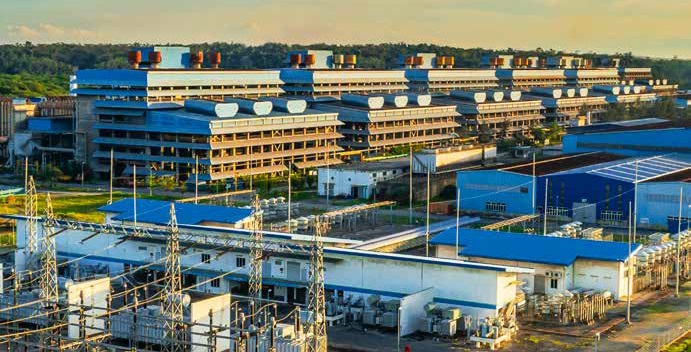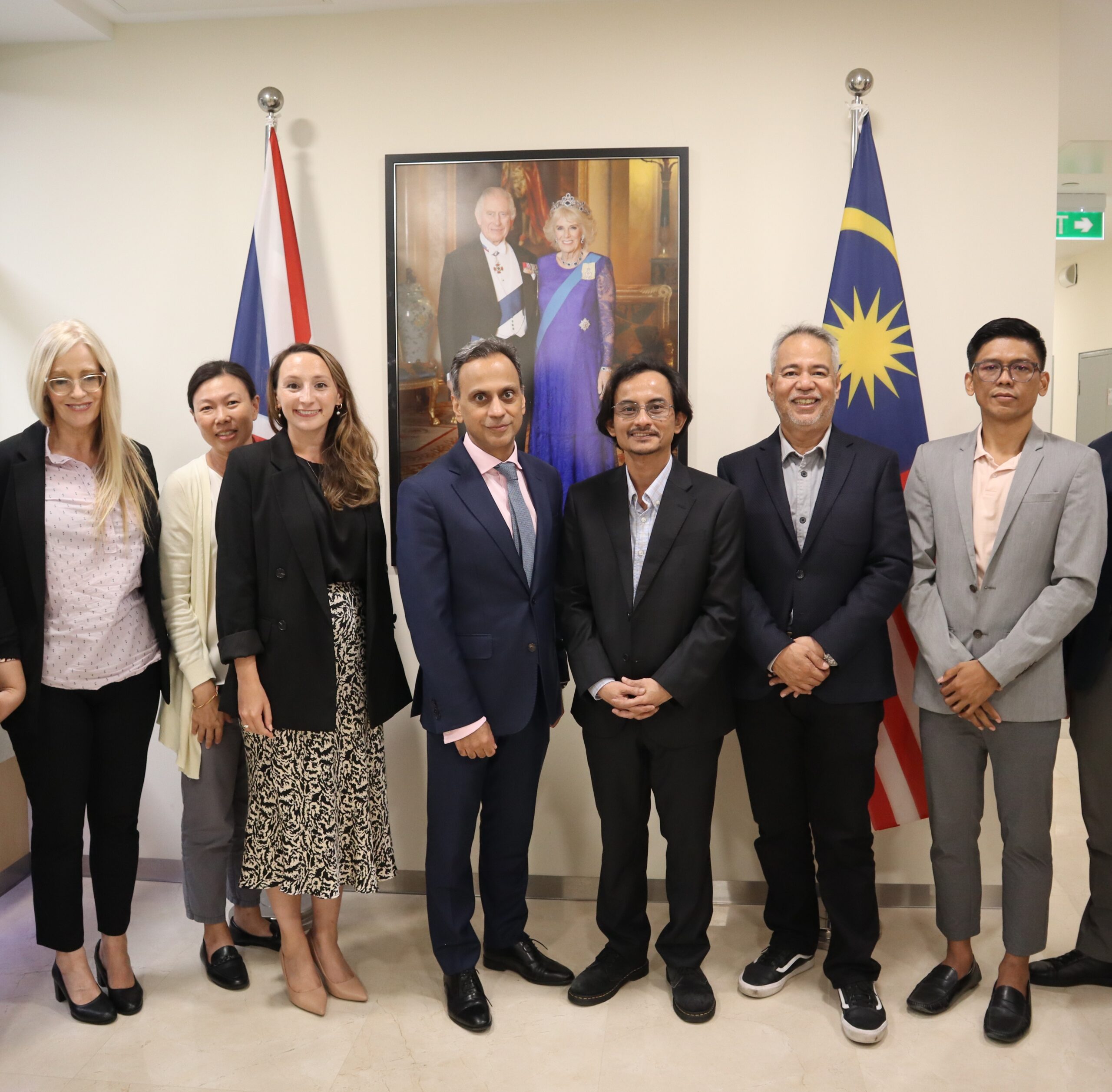KUCHING: OM Materials (Sarawak) Sdn Bhd (OM Sarawak) has increased the combined production of ferrosilicon (FeSi) and manganese (Mn) alloys by more than 17 per cent to 508,512 tonnes last year from 433,961 tonnes in 2023 or up by 74,551 tonnes.
Year-on-year, the production output of FeSi surged to 190,517 tonnes (2023:139,529 tonnes) while the production volume of Mn alloys shot up to 317,995 tonnes (294,432 tonnes).
OM Sarawak, a wholly-owned subsidiary of OM Holdings Ltd (OMH), owns and operates a ferroalloy smelting plant in Samalaju Industrial Park, Bintulu. The plant has 16 units of furnaces, of which six units are allocated for the production of FeSi, eight units for Mn alloys and two units for silicon metal.
The plant has a design annual capacity to produce approximately 120,000 to 126,000 tonnes of FeSi, 333,000 to 400,000 tonnes of Mn alloys and 21,000 to 24,500 tonnes of silicon metal.
As at December 31, 2024, a total of 15 furnaces were in operation, with eight of them (6 FeSi furnaces and 2 silicon metal furnaces) producing FeSi and seven furnaces producing Mn alloys.
“During the quarter ended 31 December 2024 (4Q2024), the production volume volumes for FeSi (including high purity ferrosilicon) increased by 7.7 per cent or 3,434 tonnes (to 48,061 tonnes from 44,627 tonnes) while Mn alloys (including siliconmanganese and high carbon ferromanganese) decreased by 15.5 per cent or 13,364 tonnes (to 72,769 tonnes) compared to the previous quarter (86,133 tonnes). The increase in FeSi production for the reporting quarter was due to the addition of one silicon metal furnace producing FeSi.
“The full year FeSi production rose significantly by 36.5 per cent, reaching 190,517 tonnes compared to 139,529 tonnes in 2023 when four FeSi furnace underwent major maintenance,” OMH said in a filing with Bursa Malaysia.
In 4Q2024, OM Sarawak recorded a drop in Mn alloy outputs to 72,760 tonnes (3Q2024:86,133 tonnes).
OMH attributed the decline in Mn alloys production in 4Q2024 to a furnace shutdown because of a minor incident that happened on November 18. The incident involved an outflow of molten material from casting moulds at one of the plant’s Mn alloy workshops. When contacted with water, this caused a localised blast of pressurised steam. The affected furnace workshop sustained minimal damage in the incident. The affected furnace has since resumed operation and will not impact on-going production in 2025.
Despite the drop in 4Q2024 production, the full year output of Mn alloys rose by eight per cent to 317,995 tonnes (2023: 294,432 tonnes).
In 4Q2024, OM Sarawak recorded lower sales of FeSi but higher sales of Mn alloys as compared to 3Q2024.
“Sales volume of FeSi declined marginally by 4.5 per cent or 1,940 tonnes (to 41,061 tonnes) whiles sales volumes of Mn alloys increased by 32.3 per cent or 22,547 tonnes (to 92,674 tonnes) compared to the previous quarter.
This was mainly attributed to shipments from the previous quarter being carried over into 4Q2024.”
Year-on-year, OM Sarawak posted higher sales of FeSi to 180,845 tonnes (2023: 135,545 tonnes) while the sales volume of Mn alloy jumped to 317,013 tonnes (290,770 tonnes).
OMH said 14 out of the 16 furnaces had undergone and completed major maintenance, of which 13 furnaces had passed hot commissioning and performance testing phases.
“As a precautionary measure, the hot commissioning of one Mn alloy furnace was extended and is anticipated to be completed in 3Q2025 due to furnace lining issues. The remaining two FeSi furnaces are scheduled to commence major maintenance in 2025.
“One silicon metal furnace has achieved provisional acceptance but ceased hot commissioning and performance testing of silicon metal production in October 2024. With the global silicon metal market experiencing a period of oversupply coupled with subdued demand, both silicon metal furnaces have been switched to produce FeSi to ensure optimal returns and to maximise furnace utilisation rates,” added OMH.
OM Sarawak’s smelting facilities also consists of a sinter plant, which produced 124,704 tonnes of manganese sinter ore (for internal consumption) last year, a decline from 154,273 tonnes in 2023.
In a marketing and trading update, OMH said in 4Q2024,a total of 514,757 tonnes of ores and alloys were transacted (which included intercompany sales), and this represented a 9.2 per cent quarter-on-quarter increase against that of 3Q2024. The increase was mainly the result of higher volumes of Mn ores traded in the current quarter under review.
“According to the International Manganese Institute, world crude steel production during October and November 2024 was 306.3 million tonnes, which represented a 1.8 per cent decrease as compared to the same period in 2023.
“Fastmarkets MB reported that the price of Mn ore High Grade closed at US$4.08/dmtu CIF China at the end of December 2024, a decrease of 17 per cent from US$4.91/dmtu CIF China at the end of September 2024. The decline in Mn ore price since April 2024 has continued into 4Q2024. However, towards the end of the quarter, higher prices were quoted, indicating a modest recovery,” said OMH.
In 4Q2024, FeSi price slipped to US$1,185 per tonne CIF Japan from US$1,275 per tonne. But SiMn price rose to US$885 per tonne CIF Japan from US$875 per tonne.
In 4Q2024, freight rates dropped, with Fastmarkets MB reporting an implied freight rate of US$0.66/dmtu from South Africa to China for 37 per cent manganese ore as compared to US$0.74/dmtu at the end of September 2024.
In 4Q2024, OM Sarawak made loan repayment of US$12.4 million to project finance lenders.

















